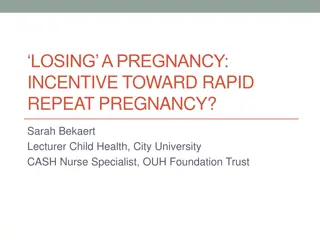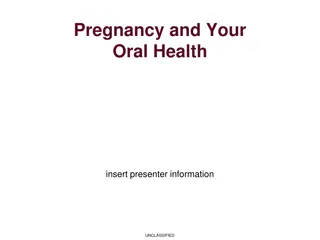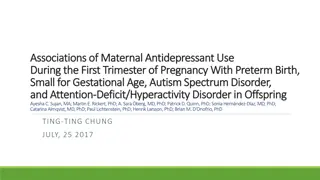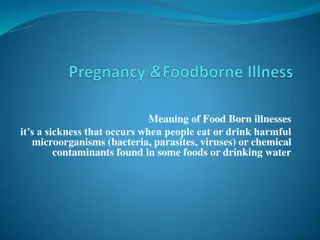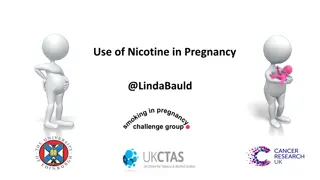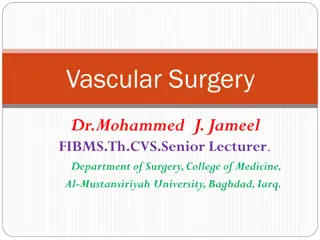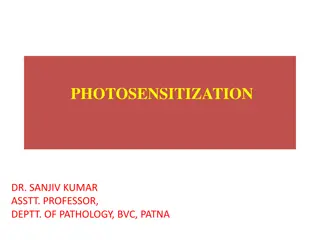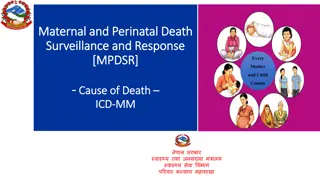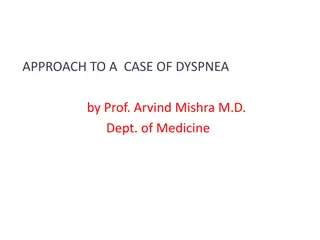Understanding Second Trimester Miscarriage: Causes and Management Options
Second trimester miscarriage, occurring after 12 weeks of gestation, can be caused by factors such as cervical injury, infections, thrombophilias, uterine abnormalities, and chromosomal issues. Management options include medical, surgical, and expectant approaches, with factors like gestational age and patient preferences influencing the choice. Expectant management may lead to spontaneous resolution in up to 85% of cases, while medical management involves protocols like Mifepristone and Misoprostol administration. Patient education, support, and close monitoring are essential throughout the process.
Download Presentation

Please find below an Image/Link to download the presentation.
The content on the website is provided AS IS for your information and personal use only. It may not be sold, licensed, or shared on other websites without obtaining consent from the author. Download presentation by click this link. If you encounter any issues during the download, it is possible that the publisher has removed the file from their server.
E N D
Presentation Transcript
Second trimester miscarriage Zeena helmi
Definition is defined as the loss of a pregnancy prior to viability, taken legally in the UK as a gestation date of 23 weeks 6 days. Beyond this, fetal demise is classified as stillbirth. second-trimester mis- carriage occurs after 12 weeks gestation and accounting for 1 4% of all miscarriages
causes Cervix: cervical injury from surgery, cone biopsy and large loop excision of the transformation zone Infection: may occur with or without ruptured mem- branes. May be local to the genital tract or systemic. Thrombophilias. Uterine abnormalities: submucous fibroids and con- genital distortion of the cavity (uterine septae) may be implicated. Chromosomal abnormalities: these too may not become apparent until the second trimester.
Management Management Management options fall into three groups: medical, sur- gical or expectant. Factors to be taken into account when discussing these options with patients include the following. Type of miscarriage(same as classification for first trimester miscarriages) Gestation at which miscarriage is diagnosed Facilities available at individual units: Medical history: cardiac disease and sickle cell anaemia for example. The risks are increased in the presence of haemorrhage and so generally among these patients sur- gical evacuation, being associated with less blood loss, is the most appropriate choice. Patient choice. Cost.
Expectant management Expectant management Up to 85% of miscarriages will resolve spontaneously within 3 weeks of the diagnosis. Patient satisfaction with expectant management depends on appropriate patient selection (earlier gesta- tion, singleton pregnancy, social circumstances) and counselling. Patients should be made aware of what to anticipate (pain and bleeding), be given advice regarding analgesia and what to do with the tissue passed. The advice should be backed up with written information and contact details in case of concern or complications.
Medical management Medical management Following Mifepristone(pretreatment the patient is admitted for Misoprostol regimen Vaginal Misoprostol 200 micrograms should be given in the posterior fornix every three hours x 5 doses. (New 2019) The risk of uterine rupture with misoprostal, although small, is increased in women with a second trimester loss with a uterine scar. Staff should be vigilant to clinical features that may suggest uterine scar dehiscence or rupture e.g. maternal tachycardia, atypical pain Side effects include nausea, vomiting and diarrhea.
Overall, the success rate of medical management (72 93%) is similar to that of expectant management (75 85%) but medical management has the advantage that patients can control the course of events by timing medi- cation to allow the miscarriage to take place.Compared with surgical man- agement, there is significantly more associated blood loss but no increased requirement for blood transfusion. Reassuringly, rates of infection between the three options are similar
Surgical management Surgical management Surgical management involves evacuation of the uterus by dilatation and evacuation The procedure can be performed under general or local anaesthesia depending on local experience. Cervical dilatation can be assisted by cervical priming with a prostaglandin (e.g. misoprostol) a minimum of 1 hour prior to the procedure
Surgical management is usually safe but it is important to counsel women about the associated risks. These include the risk of general anaesthesia , the risk of infection or retained products (3 5%) and potential bleeding in association with this and the 0.5% risk of uterine perforation. Asherman s syndrome, due to over-vigorous curettage
Rhesus status Rhesus status The recommended dose of anti-D immunoglobulin for miscarriage is 250 units before 20 weeks gestation and 500 units after 20 weeks. It is further recommended that a Kleihauer test be performed to assess the quantity of feto-maternal haemorrhage after 20 weeks.
cervical incompetence Definition: Inability of the uterine cervix to retain a pregnancy in the absence of contractions or labor Painless cervical dilation or Cervical insufficiency (CI), occurs in 1 in 50 to 1 in 2,000 gestations.
Risk factor 1-Congenital Short cx Mullerian duct abnormalities ( Bicornuate or unicornuate uteri ) DES exposure in utero Connective tissue disorder reg: Marfan Syndrome
2-Aquired Cervical laceration following NSVD Cervical injury at time of CS Cervical conization (LEEP/LLETZ, cold knife cone biopsy) Cervical dilation (D&C; D&E) Uterine overdistention Multifetal gestations Polyhydramnios Infection/inflammation
Diagnosis Painless cervical dilation Transvaginal sonography Cervical shortening Cervical funneling
Pelvic rest, progesterone replacement, and cervical cerclage have been suggested to prevent repeated pregnancy loss from CI, but the evidence for their effectiveness is mixed. McDonald or Shirodkar (prophylactic)cerclages are placed vaginally, usually at 12 to 14 weeks gestation; selection of technique depends on the available cervical length and surgeon experience/preference. Rescue cerclage for CI/ with bulging membranes as is associated with >50% risk of complications.
Abdominal cerclage is placed at laparoscopy in rare instances for women who have minimal to no residual cervical length (often due to large cone biopsies or trachelectomy). Subsequent cesarean section is necessary. Cerclage is removed when the patient begins to labor, when membranes rupture, if there is evidence of uterine infection, or if the patient reaches 37 weeks gestation.



